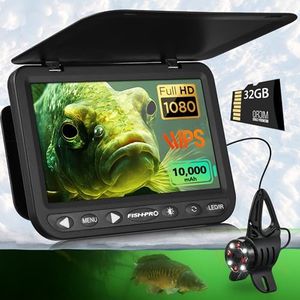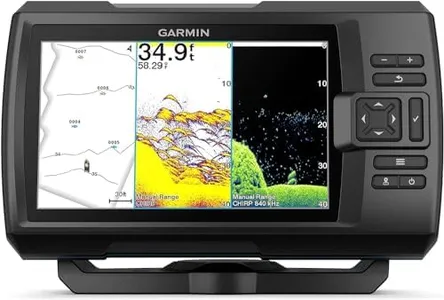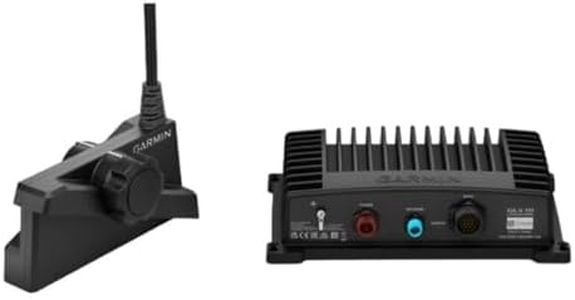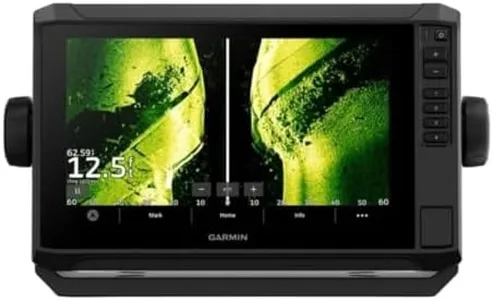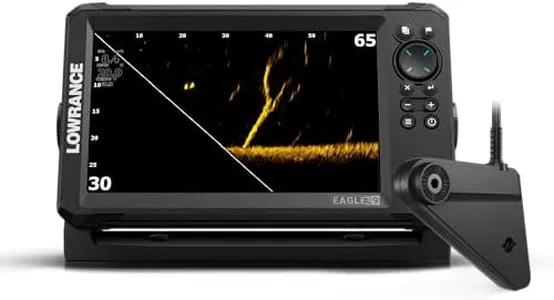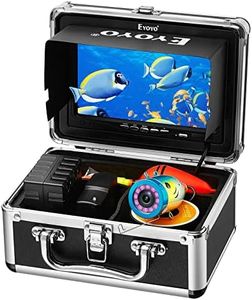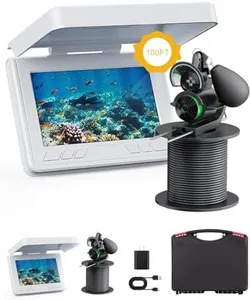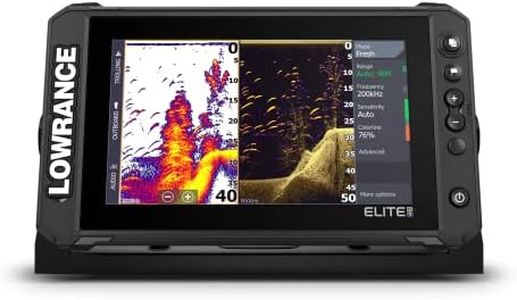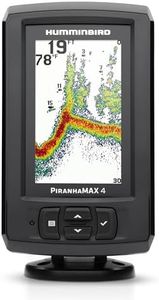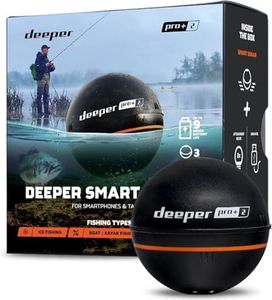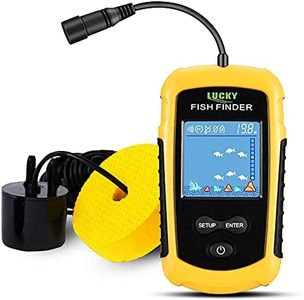10 Best Sonar Fish Finders 2025 in the United States
Our technology thoroughly searches through the online shopping world, reviewing hundreds of sites. We then process and analyze this information, updating in real-time to bring you the latest top-rated products. This way, you always get the best and most current options available.

Our Top Picks
Winner
Garmin Striker Vivid 7cv, U.S. with GT20-TM Transducer - Easy-to-Use 7-inch Color Fishfinder and Sonar Transducer, Vivid Scanning Sonar Color Palettes (010-02552-00)
Most important from
329 reviews
The Garmin Striker Vivid 7cv is a user-friendly fishfinder that comes with a 7-inch color display, making it easy to read and use while out on the water. One of its standout features is the vivid scanning sonar color palettes, which help distinguish between fish and underwater structures more clearly. This model includes the GT20 transducer, providing both CHIRP traditional sonar and CHIRP ClearVü scanning sonar, offering detailed and accurate readings of what’s below the surface.
The addition of high-sensitivity GPS allows you to mark waypoints, create routes, and monitor your boat’s speed, which is highly useful for navigation and returning to productive fishing spots. Another significant benefit is the built-in Quickdraw Contours mapping feature, enabling you to create your own fishing maps on the fly. The device also supports Wi-Fi connectivity, allowing you to connect with the ActiveCaptain app on your smartphone to transfer waypoints, receive notifications, and access the Garmin Quickdraw Community for shared data and maps.
However, there are a few considerations to keep in mind. The device relies on button controls, which might feel less intuitive compared to touchscreens. Additionally, while the 7-inch screen is a good size for visibility, it may not be sufficient for those who prefer larger displays. The unit’s portability could be a concern for some users, as it weighs 4.4 pounds and requires a surface mount, which might not be ideal for smaller boats or those needing more flexible installation options. Despite these points, the Garmin Striker Vivid 7cv offers a comprehensive set of features that make it a solid choice for both novice and experienced anglers looking for reliable fishfinding and navigation tools.
Most important from
329 reviews
Garmin LiveScope™ Plus System with GLS 10™ and LVS34 Transducer, Target Separation, Sharp Sonar Images, Vivid Color, Clear Vision, Black
The Garmin LiveScope™ Plus System with GLS 10™ and LVS34 Transducer is a powerful tool for anglers seeking precise and vivid sonar images. It boasts a large 10.1-inch LCD screen that provides clear and sharp live sonar views, making it easier to spot fish and underwater structures. The system's improved transducer technology reduces noise and sonar artifacts, which enhances the clarity of the images.
Additionally, the vivid color palettes available help in distinguishing details underwater, a useful feature for both recreational and professional fishermen. The system supports Forward, Down, and Perspective modes, offering versatility based on your fishing needs. All necessary mounts are included, making it convenient to set up right out of the box. However, it's important to note that GPS integration is not mentioned, which might require additional purchases if GPS functionality is critical for your fishing trips.
The system is battery powered, so you need to ensure you have a reliable power source during use. Weighing in at over 10 pounds, it may not be the most portable option available, which is something to consider if you need a lightweight device. This system is ideal for those who prioritize high-quality imaging and detailed underwater views, though it may not be the best choice for those seeking a highly portable and GPS-integrated solution.
Garmin ECHOMAP UHD2 94sv with GT56 Transducer, 9" Touchscreen Chartplotter, Garmin Navionics+ U.S. Coastal
Most important from
149 reviews
The Garmin ECHOMAP UHD2 94sv features a 9-inch touchscreen that is bright and easily readable even in direct sunlight, making it user-friendly for outdoor use. Its screen resolution of 1024 x 600 delivers clear and detailed images, which are crucial for fish finding and navigation. The included GT56 transducer supports traditional, ClearVü, and SideVü sonar frequencies, providing comprehensive underwater imaging to help locate fish and structure effectively.
This device also comes with built-in Garmin Navionics+ coastal charts, offering detailed map data for the U.S. coastal regions, which is particularly beneficial for coastal fishing enthusiasts. The integration of GPS enables precise navigation and route planning, enhancing fishing trips and ensuring you stay on course. Additionally, the ECHOMAP UHD2 supports wireless connectivity, allowing for the sharing of sonar data, waypoints, and routes between compatible devices. It can also connect to a Force trolling motor wirelessly, providing control over speed and battery monitoring from the chartplotter itself.
However, at 8.08 pounds, the device is relatively heavy, which may affect portability. It is designed to be mounted on a dashboard or panel, so it’s best suited for those who have a fixed location to install it on their boat. The Garmin ECHOMAP UHD2 94sv offers robust features for serious anglers, but its weight and mounting requirements may be drawbacks for those looking for a highly portable solution.
Most important from
149 reviews
Buying Guide for the Best Sonar Fish Finders
Choosing the right sonar fish finder can significantly enhance your fishing experience by helping you locate fish more efficiently. When selecting a fish finder, it's important to consider various specifications that will impact its performance and suitability for your needs. Understanding these key specs will help you make an informed decision and ensure you get the best fit for your fishing style and environment.FAQ
Most Popular Categories Right Now
